So you have a website. You’ve listed all your products and included details of your services. But nothing much is happening. No one is visiting and, consequently, no one is buying.
What’s missing?
Traffic.
Simply having a website isn’t enough. You need to tell people about your site, and you need them to be able to find it.
Here are 19 tried-and-tested ways of increasing website traffic that will help you do just that.
Don’t feel like reading all 19 tactics? That’s OK, we won’t be offended! Just use the links below and skip to a section of interest.
- Use Content Marketing
- Promote Everything
- Utilize Email Marketing
- Embrace Community
- Boost Organic Traffic with SEO
- Get Onto Social Media
Ready to get started? Let’s drive more traffic to your business website and blog content.
We doubled our blog’s traffic with WordPress
We'll show you how! Join 150,000+ others who get our monthly newsletter with insider WordPress tips.

Use Content Marketing
Some digital marketers might have you believe that content marketing is a new phenomenon. Even by looking at Google Trends for the last 16 or 17 years, you might be tricked into thinking content marketing is something recent.

In reality, content marketing has been around for many years. One of the first documented instances of a business using content marketing comes from 1895 (yes, that long ago!).
Then, in 1900, Michelin (the tire company) produced their first Michelin Guide. While it included tips on changing your tires and where to refuel your car, it also featured a list of places that hungry travelers could eat. And it was a massive success. It’s a great example of a business targeting their audience with content that they would find helpful without overselling their products.
Content marketing is essentially the process of identifying your target market’s pain points and creating content that helps your target audience address them.
Remember: It’s not all about you and your business, and it’s not solely about your products. It’s about helping your current or potential customers.
1. Answer Niche-Specific Questions
No matter where in the buying cycle your potential customers are, they’re going to have questions that need answering. These could be top of the funnel (like “what is content marketing?”) or further down the funnel (like “which content marketing tools are best for content planning?”)
By answering these questions, you are putting your business in front of potential customers, regardless of where they are in the buying cycle.
So how do you go about finding the questions that potential customers are asking?
Your first port of call should be Google. Simply searching for your topic will start to give you ideas. Look at the questions in the image below. Google is giving you the kind of questions you need to answer, right there in the search results.

These are People Also Ask boxes (or PAA boxes). Getting your content to appear in them is a surefire way to drive website traffic. You’ll also notice that you get more and more questions to answer when you start clicking these search results. Handy, eh?

All you need to do is start collecting this information and using it to inform your FAQ and Q&A content.
And don’t worry, there are plenty of ways to automate collecting this data.
If you want to collect the data straight from the search results, you can use a plugin like SEO Minion. If you want to take it a little further, you can use a freemium tool like AlsoAsked or Answerthepublic.
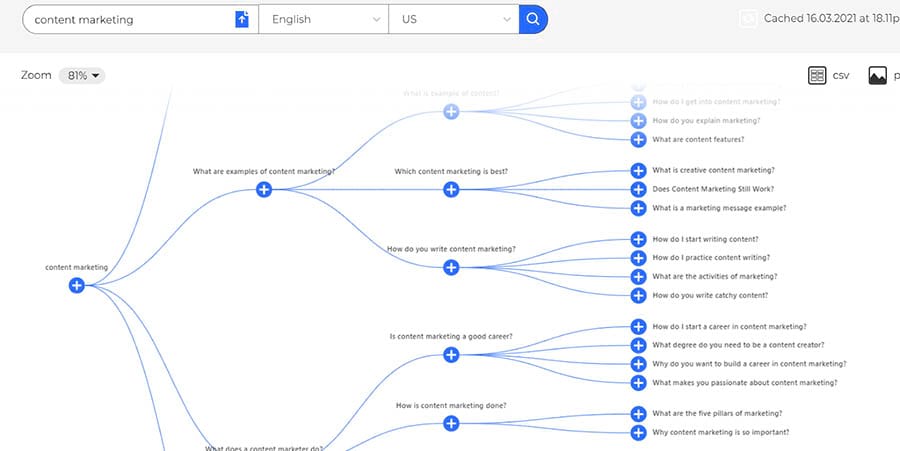
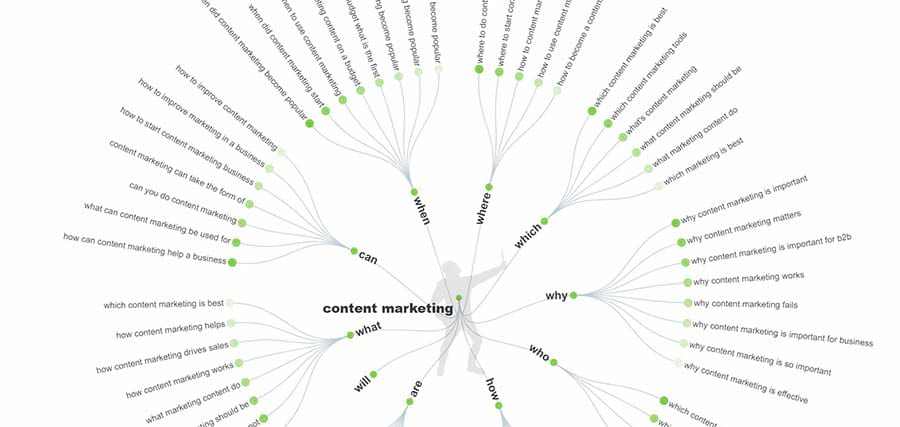
2. Produce Evergreen Content
Now let’s get this straight: We aren’t against seasonal content. If you sell a seasonal product or service, it makes sense for you to create seasonal content. But if you want to drive traffic to your site all year round, you need to create evergreen content.
But what is evergreen content?
It’s pretty much what it says on the tin — it’s content that can drive traffic to your site all year round. There are fewer troughs and peaks, resulting in more reliable and consistent traffic.
There are many types of evergreen content (and most of the topics and ideas can be found in the tools mentioned just below), but here are some of the most consistently successful formats.
- How-to guides
- Q&As and FAQs
- Step-by-step processes or tutorials
- Ultimate guides
- Product reviews and round-ups
- Training guides
One way to make sure this type of evergreen content continues to be successful is regularly updating it. Periodically review the content and make sure that the advice is up-to-date and relevant. That way, you’ll keep sending on-topic traffic to your site year after year. It’s the gift that keeps on giving!
Related: How to Write a Blog Post — A Step-By-Step Guide
3. Create Eye-Catching Visual Content
It’s worth noting that with this tactic, you’re more likely to get links and exposure on other sites that help drive traffic to your site over time — unless, of course, you can attach your visuals to the kind of content people are actively searching for.
What type of visual content can you create? You probably need to be thinking along the lines of:
- Visualizing data that is relevant to your niche.
- Infographics that help people understand complex topics quickly.
- Photographs that you can license via Creative Commons resulting in your business getting cited on other sites.
4. Create Expert Roundups
Another tried-and-tested way to drive traffic to your site is by creating expert round-ups within your niche. It can be relatively easy to get people in your industry to share their thoughts on a particular topic — at the end of the day, we’re all trying to promote our business.
The great thing about expert roundups is that both sides benefit. You get content. Content that can drive traffic when it’s shared by its participants. And participants benefit from the exposure that they get by being featured on your site.
You can easily find experts within your industry using tools like Ahrefs, Buzzsumo, and Buzzstream Discovery — all of which are mentioned later in this article.
You can then reach out to the experts and ask them for an opinion on an evergreen topic.
It’s a win-win-win content marketing tactic.
5. Always Be Repurposing
No matter what kind of traffic-driving content you create, you need to ensure you make the most of it. Don’t just use the content once. Use it across different channels and get more bang for your buck.
Need a few ideas? Here are some ways you can repurpose your content marketing.
- A presentation can be recorded and uploaded to YouTube or a podcasting service.
- The same presentation can be transcribed using a service like otter.ai and can become a blog post with a bit of tweaking.
- Visual content for guides and blog posts can be repurposed for social media.
- Blog posts can be periodically sent out to an email marketing list.
- Take internal processes and turn them into whitepapers.
- Combine blog posts with new content for whitepapers and eBooks.
- Curate your teams’ tweets for tips and tools roundups.
The list is almost endless. And the more places your content appears, the more chances you have to drive traffic back to your site.
6. Update Stagnant Content
What about the content you’ve created in the past? Is it losing traffic? Did it peak before seeing a slow decline?
Don’t ignore it — you can give it the kiss of life with a little bit of love — and that’s much quicker to do and cheaper to produce than another piece of content.
There are loads of ways to identify stagnant content — the most obvious place to start is Google Analytics or Google Search Console. If the piece has performed well in the past, it stands to reason that it can perform well again.
A few tools have popped up recently that analyze this data for you. And anything that takes out some of the manual labor is a big benefit in our book. Two of the most popular are Revive and the content decay feature in ClickFlow.

Not all content marketing is about creating something new. You need to keep an eye on what you’ve created before. Sometimes it pays to look backward as well as forwards.
Related: Your Guide to Lead Magnet Creation (53 Easy Ideas)
Promote Everything
Do you remember the old Kevin Costner film “Field of Dreams”? The one in which he delivered the classic line: “If you build it, he will come”?
Sure, you can create amazing, quality content. That doesn’t mean people will flock to read it, share it, and link to it. That very rarely happens. Many great pieces of content marketing have been resigned to the bin because the team behind them assumed that the people would just come.
So how do you attract page views? Quite simply, via promotion. You need to be promoting.
Here are some surefire ways to get eyeballs on your content. And when those eyeballs are on your content, that’s when you get the social shares and the links that you need for it to be successful.
7. Always Be Outreaching
Outreach is vital. You need to get your content in front of the right people. They are the ones that share your content; they are the ones that link to your content; they are the ones that can help amplify your content.
But how do you get started with outreach?
It begins with a list. You build a list of sites and journalists relevant to both your niche and the content you’ve created. And when we say list, we aren’t talking about 10 or 15 people. Outreach is challenging, and response rates are low. You need to build lists with 100s of sites and journalists to get a good ROI for your outreach efforts.
8. Crunch Data to Find Similar Content
So what are the best tools for finding these sites and journalists? Let’s take a look at a few of the most popular options.
Ahrefs Content Explorer
With Ahrefs, you can find sites and journalists according to topic. With just a few clicks and some refining of the search results, you can grab the data for hundreds of relevant sites. This saves hours of manual work.
The data it grabs for you includes (but isn’t limited to):
- The pages that similar content appears on (and by default, the site).
- Top authors.
- The domain rating (essential if you’re looking to build links).
- The number of domains that link to the piece of content.
- Estimated traffic.
- Who tweeted the content.
You’ll get an overview of the topic, similar to what you see here:

You can then look at the details at a URL level.

Buzzsumo
Buzzsumo is one of the most loved tools for finding people who write about topics you cover.
Alongside handy content research tools, Buzzsumo has a topic feature that allows you to build outreach lists at scale. The data you can see includes:
- Trending and popular content for your chosen topic.
- Social stats around those articles (including Facebook, Twitter, Pinterest, and Reddit stats).
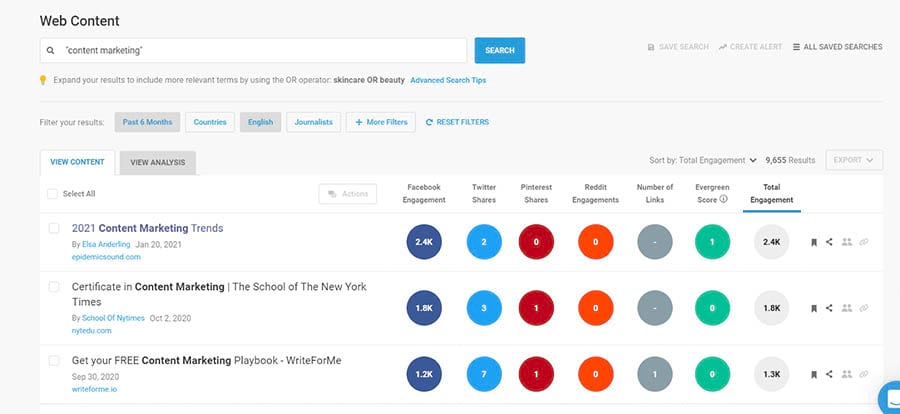
Another more recent feature allows you to find journalists that cover the type of content you’ve created.

Clicking their name enables you to gather the data required to reach out to them.
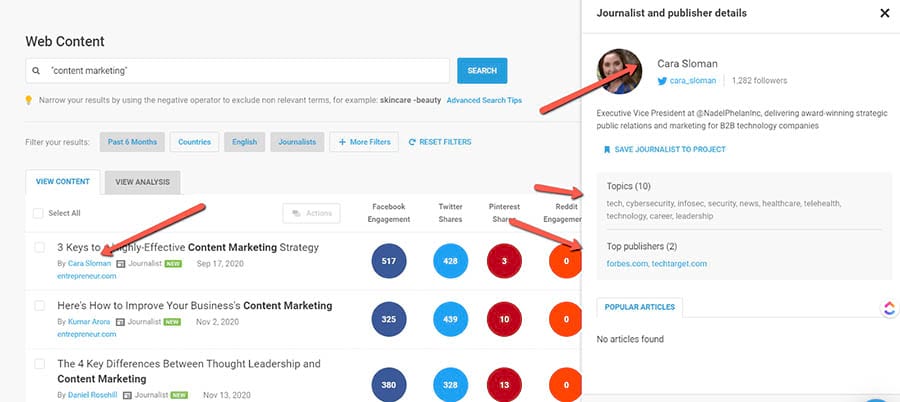
So that’s all well and good, but then you need to keep all that data in a centralized place, so you can track your efforts. When you’re working to a strict budget, a shared Google Sheet is enough. If you have a team, you’ll be better off with purpose-built software like Pitchbox or Buzzstream.
These tools will allow you to upload the lists you’ve created so you can qualify the results and reach out to the people you want to get in front of.
Ensuring you track as much as possible is critical both for outreach and ensuring people see your content. If nobody sees it, it’s never going to be successful.
Related: How to Create a Link Building Strategy
9. Consider Guest Posting
Didn’t Google once say that we “should stick a fork” in guest posting? Wasn’t it “done” quite a few years ago?
Well, yes, but that doesn’t mean that you shouldn’t consider it as a tool for helping to promote your content — it’s still a viable tactic when done right.
So what do you need to do?
Essentially, you need to try and guest post on good sites. But what’s a good site? Well, we’re glad you asked.
Here are a few things to look out for when choosing a site you might want to guest post on.
- Does the site have a decent amount of traffic?
- Does it write mainly about your niche (you’ll want to stay away from general “we-cover-everything” type sites).
- Does it have respected or expert writers on its staff or guest post roster?
- Does the site have a lot of pages indexed by Google?
- Does the site have high social engagement metrics?
- Does the site match your target audience?
At the end of the day, when trying to identify and create a guest blogging strategy, you need to go for quality over quantity. Google is good at spotting patterns, and if it thinks you’re trying to game the system, you could find yourself in trouble with the search engine powers-that-be.
10. Reach Out to Influencers
Influencers have been a hot topic for a few years now, with many getting a lot of love from some of the world’s biggest brands. But influencer marketing isn’t just for high-flyers — small brands can get in on it too.
And influencer marketing can work in pretty much every niche. You just have to know where to look. For example, you probably wouldn’t use an Instagram influencer to drive traffic to an attorney’s website — it just isn’t a fit.
So how do you go about finding influencers that fit your business and your website’s content? Well, there are a number of tools that can help: Klear and Upfluence are two places you can get started.
But it’s not just about social media. Bloggers are also influencers, and they can be very effective when it comes to driving traffic and brand awareness. Social media is time-sensitive, whereas blog content can send a steady stream of traffic for much longer, sustained periods.
There are plenty of tools that allow you to search for and engage with these influencers. Here are some of the most popular:
Utilize Email Marketing
Email marketing sounds a little dated. Do people even open emails anymore? Surely they don’t click on links or buy as a result of them, right?
In short, no, it’s not dated. People are still opening emails, and they’re still clicking links and buying the things that those emails promote.
In fact, data from 2019 found that 73% of marketers reported the ROI of email marketing to be either “good” or “excellent.” To be more exact, email marketing generates an average of £42 (or $55) for every £1 spent.
Email marketing isn’t looking so bad now, right?
Unfortunately, you can’t just open a MailChimp account (or whatever your email marketing service of choice might be). You need people to email.
11. Grow Your Email List
There are many tips, tricks, and strategies for getting people to sign up to your emails, including (but not limited to):
- Incentivizing sign-ups (with a discount, for example).
- Hiding content behind a paywall that only subscribers can access.
- Dotting call-to-actions across your site.
But these aren’t going to help much unless you already have a steady stream of traffic.
So what can you do to get people onto your email list if they’re not visiting your site?
- Get involved in events. Sponsor them. Talk at them. Host them.
- Run a competition. Many sites run competitions on behalf of other companies, which in turn provide the prizes. Most will ask for email addresses as part of the entry conditions.
- Promote your newsletter in your email signature.
- Create ads on social media that incentivize sign-ups — for example, with a product discount or the promise (and delivery) of great content in exchange for an email address.
Related: Build an Email List With Your WordPress Website in 3 Simple Steps
Embrace Community
12. Participate in Online Communities
Participating in online communities can not only drive traffic to your site, but it can also help establish your business as an expert in its niche.
There are many ways you can do this, but in our experience, the ones that can drive the most traffic are the following:
Quora is the site for answering potential customers’ questions. Also, Quora pages often rank well in Google, giving you more visibility than you might get via your own site.
As with any community, you have to make sure that the questions you answer and the advice you give are impartial. Never push your products or services, or you will get flagged, and your answers (aka your hard work) may get removed.
Reddit is an internet behemoth and, according to Similarweb, receives around 1.5 billion visits per month. If you can find subreddits to fit your niche, Reddit can drive a lot of traffic.
A word of caution, though: Never, ever self-promote. Your posts will be removed very quickly if you do. If you participate in discussions around your topic and provide valuable insight, you may find you can share your content further down the line and get great results when you do. But always proceed with caution.
It’s also worth familiarizing yourself with each subreddit’s rules that you participate in, as they are all different.
13. Be Helpful on Forums
Many marketers look down on forums as a means of increasing traffic, largely because they’ve long been used as an “easy” link-building tool. But forums aren’t all spam. They can be (and often are) used as a legitimate means of driving traffic.
Since most popular forums have a good few years under their belt, they usually have many active members. They’re not forums, really. They’re communities that come together around a passion for a particular topic.
While forums can look outdated, that doesn’t mean they don’t have an audience, and any engaged audience is worth tapping into.
If you can find the right forums and be genuinely helpful in your contributions, you can consistently drive traffic to your site. There’s a few things to remember, though:
- Don’t post links to your content too often — this could be seen as spammy
- Give detailed answers to questions, which demonstrate that you’re a go-to industry expert
- Share high-quality posts regularly
So how do you find these forums? The obvious place to look is Google. A quick search usually reveals some good options. There are also tools like Findaforum that can help you narrow down forums within your niche.
To find out how much traffic each of the forums you pick attracts, you can use a tool like Similarweb. This will give you an approximate idea as to how many visitors they receive every month.
14. Add a Community to Your Site
If you’re in a niche that people get really passionate about, you could consider adding a community to your website.
This could be a standard forum or more in the vein of a curated community like Product Hunt. Whatever you choose, you have to make sure that it’s the right choice for your audience. As these communities grow, they attract more people, and as it’s part of your site, they will connect with your brand.
In addition, the content that your community creates can drive additional traffic by being found in the search results and via social. Passionate people can help drive traffic.
A word of warning, though: Communities can be time-consuming to manage, and you have to make sure that content gets moderated. You might also want to consider incentivizing interaction, at least until your community gains traction. One great way to do this is to award participants points in a loyalty scheme.
Boost Organic Traffic with SEO
We couldn’t write an article on how to drive traffic to your website without talking about search engine optimization (or SEO, for short). It’s a long-term tactic with big rewards. But what is it? And why should you care?
Search engine optimization consists of a wide range of tactics and practices designed to help websites rank higher in the organic SERPs.
SERPs stands for Search Engine Results Pages. Organic refers to the natural or “free” section of the SERPs. In other words, it’s the portion of search engines that you don’t pay to appear in (and who wouldn’t love that?!)
We’re not going to be able to teach you everything you need to know about SEO in this article. SEOs (the people who practice SEO or do it day-to-day as their job) spend years honing their craft and hours keeping up to date with the latest industry trends. So instead, we’re going to cover some need-to-know SEO essentials.
15. Focus on Keywords
Keyword research is the process used to identify keywords that will help drive more traffic to a site. We typically determine a keyword’s “value” using three metrics:
- Relevancy
- Search volume
- Competition
Let’s say you’re working on a website that sells women’s shoes. Relevant keywords might include:
- Women’s sandals
- Women’s strappy sandals
- Flat women’s shoes
- Women’s shoes 3-inch heel
- Women’s ankle boots
And although these might surface when carrying out keyword research for women’s shoes, relevant keywords would definitely not include:
- Men’s shoes
- Children’s shoes
- Women’s tops
So you’d ignore these or filter them out of your research. Other things to consider when it comes to relevancy might include brand terms (you don’t want to be optimizing your site for a competitor’s name!) or terms that are too general.
Search volume is the number of people typing a particular keyword into search engines (or saying it over voice search.) This is important because more search volume = greater potential to drive traffic to your site. However, search volume alone isn’t enough to determine whether a keyword is the right choice for you. You also need to consider the competition.
Also known as keyword difficulty, keyword competition is a score, usually of between 0 and 100, that tells you how tough a keyword is to target (or in other words, whether you have a hope in Peoria of ranking for the keyword in question.)
Related: How to Determine the Most Valuable Keywords to Target
This isn’t as simple, though, as “high competition, you won’t rank” or “low competition, you will rank.” You also need to consider the strength of the site in question.
A brand new site is going to have few, if any, incoming links. This means it’ll have minimal Domain Authority and will struggle to rank for keywords with any real competition. On the other hand, a site with a DA of, say, 90+ could feasibly go after pretty much any keyword.
16. Get a Keyword Research Tool
Countless SEO tools can assist you with keyword research (and you’d be pretty hard-pressed to carry out keyword research without a tool). The trick is choosing a tool that works for you (and is within your budget.)
For years the go-to keyword research tool was Google’s Keyword Planner. Unfortunately, Google didn’t seem to like this. The tool’s been chopped and changed to the point that it’s largely useless unless you’re researching keywords specifically to advertise on Google — a shame because it’s free.
If you’re looking for the best-in-the-biz keyword researching tool, we recommend Semrush! Its database includes more than two billion keyword opportunities. On top of that, it also provides you with information on relevant keywords, related ads, product listings, and a lot more. The good news? We’ve worked out a special 14-day trial with Semrush so you can see if this tool is a good fit for your site!
Related: How to Do Keyword Research for Your WordPress Blog
17. Optimize Your Site
After completing keyword research, it’s time to optimize the site, specifically things like title tags and <h> tags and the content (the body of the page) itself.
On-page optimization is important because including the keywords you want to rank for within your <h> tags and on-page content can, well, help you rank for them. Your meta title also serves as a call-to-action within the SERPs, enticing people to click through to your site instead of a competitor’s (or it will if you write a good one!) Don’t go overboard on the keyword front, though. Write for clicks first and keywords second.
Another key component of optimization is your meta descriptions. Unlike title tags, <h> tags, and your body content, meta descriptions don’t affect rankings. They do, however, affect clicks (potentially more so than title tags).
Meta descriptions provide a short summary of a page. In many cases, they also act as sales pitches. Use them to sum up a page’s contents and, where possible, its unique selling proposition (USP).
When complete, your title tag and meta description (known together as a search snippet) should look something like this:

18. Make Technical Improvements
Some of the biggest barriers to performance in organic search and, consequently, clicks are technical. Websites with glaring technical errors will struggle to rank. In extreme cases, they might not rank at all.
Just check out Google’s Core Web Vitals project, which promises higher rankings for sites that offer a speedy user experience (UX) to their visitors.
Related: Why Your Site Speed Matters and How to Measure It
So how do you go about identifying onsite technical issues? It generally starts with a website crawler. There are quite a few around nowadays, but when it comes to cost and usability, we have two firm favorites: Screaming Frog and Sitebulb.
Website crawlers — or auditing tools as they’re also known — will crawl your website, following links and extracting data. They do this in much the same way as a search engine crawler.
Unlike search engine crawlers, though, auditing tools are working for you. They tell you what can be improved on your site or what’s just plain wrong with it. Whether this is duplicate content, orphaned pages, accessibility issues, structured data problems, and a whole host of other issues.
Here’s an example of information covered in just the summary section of Sitebulb. As you can probably tell, there’s a lot to sink your teeth into.
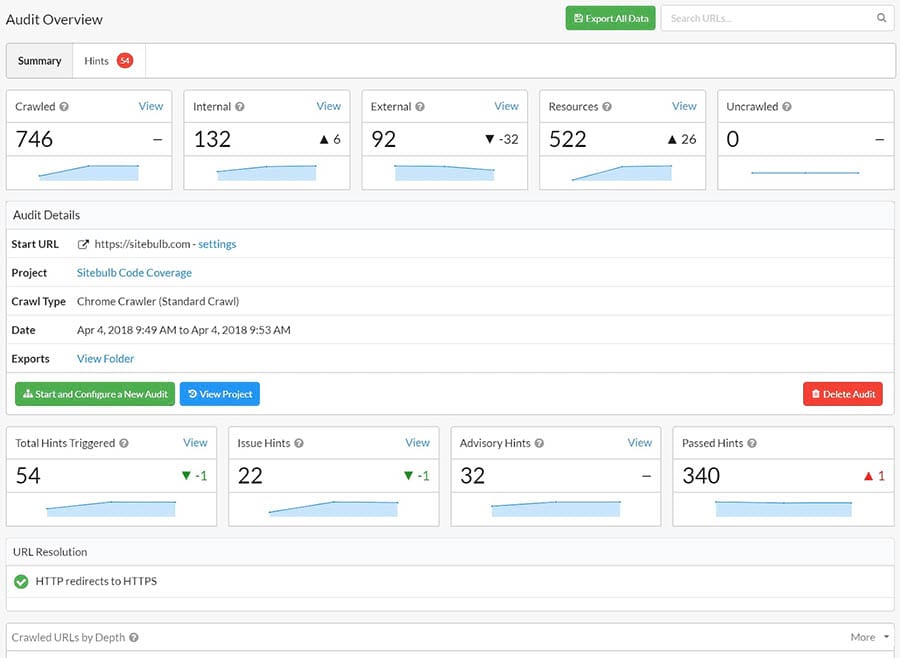
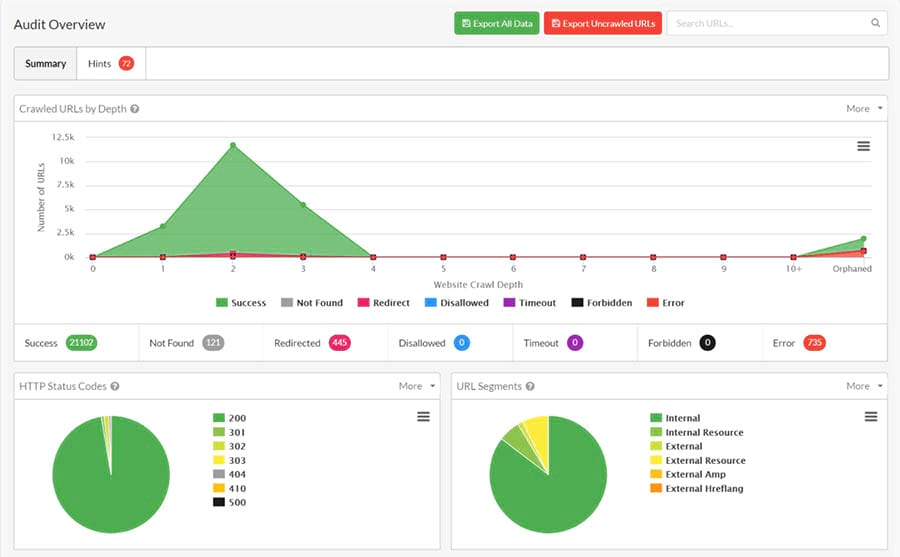
But what do you do with this information?
Well, that depends on your level of technical SEO and web development knowledge. You need the first to understand the data the auditing tools provide, and the latter to implement fixes.
(Some) site crawlers have come a long way. They don’t just tell you what the issue is. They explain the context and how to fix it. But they can’t hold your hand. Nor can they understand the nuances in each site’s issues. A human needs to dig through and analyze that data.
If you don’t feel confident in your own ability to understand and implement technical SEO improvements, you can start to learn with the following resources:
Alternatively, you could ask us about our SEO Marketing services. Packages start from $399 a month.
Search Engine Optimization Made Easy
We take the guesswork (and actual work) out of growing your website traffic with SEO.

Get Onto Social Media
Organic social media (that’s when you post to social media without paying) now offers very little ROI for businesses. Things used to be different, but shocker, social media platforms figured out that they make more money by reducing organic visibility to near zero and charging businesses to be seen instead.
Although organic social media might be a lame duck, paid social media costs are still — most of the time — surprisingly reasonable.
Related: Facebook, Twitter, or Pinterest? Choose the Best Social Media Platform for Your Business
19. Start Advertising on Social
According to data collated by WordStream, the average CPC (cost per click) on Facebook across all industries is $1.72. Of course, this cost varies significantly from industry to industry. Fashion and clothing brands pay the least, at approximately $0.45 a click. Finance and insurance (probably unsurprisingly) pay the most — around $3.77.
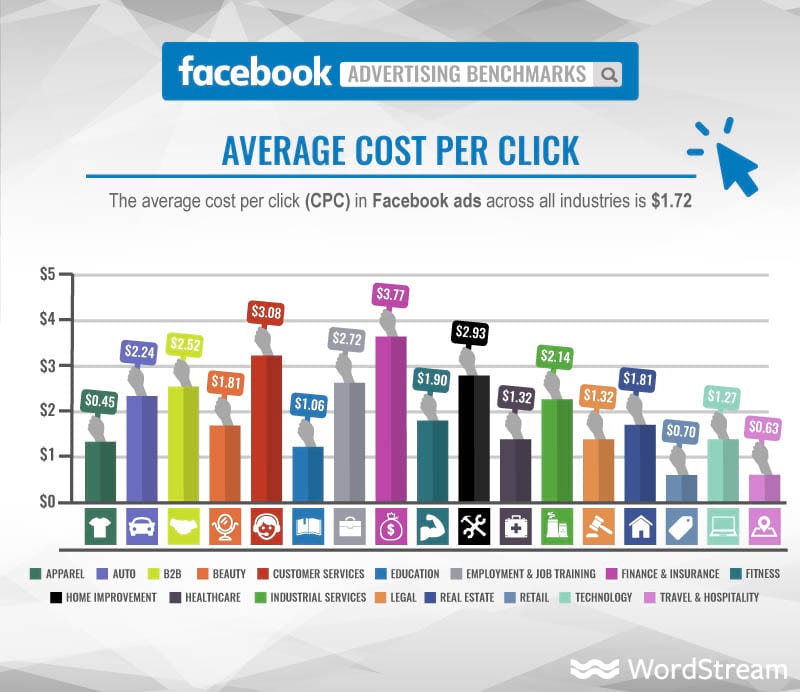
Instagram ads are generally less, at between $0.70 to $1.00 per click.
So why drive site traffic using social media vs. more traditional paid advertising platforms like Google AdWords?
Well, for one, it’s usually cheaper. Sometimes, quite significantly so.
The average CPC on Google Ads for an insurance company is an eye-watering $18.57. Fashion companies will be paying more than double what they would for a Facebook ad, around $1.19.

Social media advertising also allows you to reach potential customers where they’re relaxed and engaged. If they like your brand or product but aren’t ready to buy, they may well ‘like’ your page or profile instead. This gives you a variety of routes to market to them in the future.
Get Social and Grow Your Business with DreamHost
Our experts will help create a powerful social media strategy and level up your execution so you can focus on running your business.
Choosing the Best Tactics for Boosting Website Traffic
So you now have the details of many tried-and-tested traffic-driving tactics, but how do you know which ones are right for you?
There’s no perfect answer to this. You know your business, your current situation and your goals (and if you don’t, check out our complete guide to starting a business).
That said, you can do a few things to help you determine which digital marketing tactics you should be using and what to skip.
- Your budget. Some of these tactics are free. Some have a cost attached. It should go without saying that you ought to spend some money if you want to be effective at driving traffic to your site, but your budget will help you decide how and where you ought to be allocating that money.
- Your knowledge level. Pick tactics you feel comfortable executing. Most of us, for example, could start blogging about our industry. Keyword research requires some knowledge to get going and ensure you pick the right data, but the barrier to entry is relatively low. Technical SEO is a step (or few) up from that.
- Your goals. If you’re looking to drive traffic to increase brand awareness, content marketing is essential. If you only want people to come to your site to make a purchase, pay for targeted traffic on social media. In all cases, SEO should form part of your traffic-boosting strategy.
Ready to Drive Traffic to Your Website?
Now you have these tactics in your toolbox, you should be able to put together a simple strategy for getting more people to your site. Remember, though, that this isn’t a one-off exercise. Nor do you have to try everything at once or use only one tactic at a time.
Try something. See if it works. If it fails, stick at it a little longer but bring something else into your roster. Most importantly, make sure the technical aspects of your site are running smoothly — if you need to upgrade your web hosting, for example, we’ve got plans to suit any budget!
If you do this, it shouldn’t be long before you’re seeing a significant and consistent spike in your website’s traffic. Ride that wave!
The post 19 Tried-and-True Ways to Drive Traffic to Your Website appeared first on Website Guides, Tips & Knowledge.
source https://www.dreamhost.com/blog/driving-traffic-to-your-website/


No comments:
Post a Comment